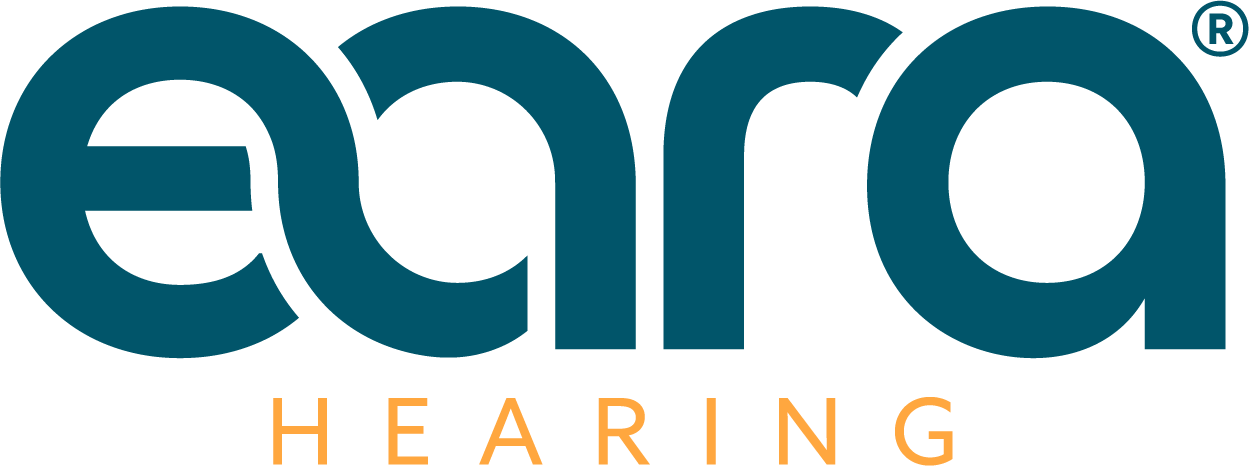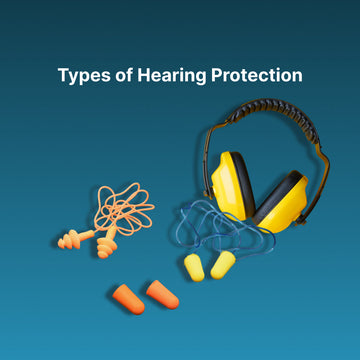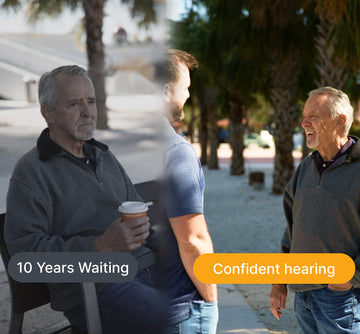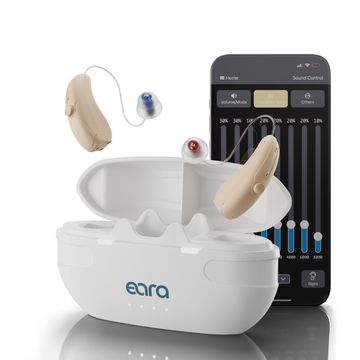Hearing loss caused by noise exposure is irreversible. Once the delicate hair cells in the inner ear are damaged, they do not regenerate, a process that often occurs gradually and without noticeable warning.
Globally, over 1 billion people aged 12–35 are at risk of noise-induced hearing loss (NIHL), according to the World Health Organization. In the United States, the CDC estimates that 25% of adults with self-reported good hearing already show signs of hearing damage from noise exposure.
Despite the scale of the issue, protection is both accessible and inexpensive. Disposable foam earplugs start at under $1, while high-end electronic earmuffs rarely exceed $300. This range illustrates how easily individuals can take action.
Regulatory bodies, such as OSHA, mandate hearing conservation programs in environments where noise levels exceed safe thresholds. Still, workers in industries like construction, manufacturing, aviation, and entertainment remain disproportionately affected.
Why Hearing Protection Matters
-
Prevent irreversible damage
Noise-induced hearing loss (NIHL) is permanent. Once the inner ear’s hair cells are damaged, hearing cannot be restored. Protection is the only effective safeguard. -
Reduce the risk of related health conditions
Hearing loss has been associated with an increased risk of cognitive decline, dementia, and depression. Even mild loss can affect brain function and emotional well-being over time. -
Preserve quality of life
Untreated hearing loss can lead to communication difficulties, social withdrawal, and reduced independence. Many people delay treatment due to cost, stigma, or misunderstanding about hearing aids, which can compound the problem and diminish day-to-day functioning.
Where Hearing Protection Is Needed
Hearing protection is commonly associated with high-noise environments, particularly in occupational or recreational settings:
Common High-Noise Environments
-
Construction sites and manufacturing plants
-
Airports and aircraft maintenance zones
-
Gun ranges and hunting grounds
-
Live music venues, nightclubs, and concerts
-
Motorsports and industrial workshops
However, many overlook the risk posed by everyday activities at home, where noise levels can also exceed safe limits:
Household Sources of Harmful Noise
-
Lawn mowers and leaf blowers
-
Power tools (e.g., drills, saws, grinders)
-
Blenders, vacuum cleaners, and hair dryers, when used for extended periods
-
Loud home audio systems
Even short-term exposure to sounds above 85 dB can cause damage over time. Awareness of these risks is the first step toward prevention.
Types of Hearing Protection
With a range of environments posing risks, from industrial sites to everyday household tasks, it’s important to select hearing protection that fits both the setting and the individual. The two primary categories are earplugs and earmuffs, each with its variations, benefits, and limitations.
Earplugs
Earplugs are inserted directly into the ear canal, making them highly portable and discreet. They are generally divided into two categories: instant fit and custom fit.
Instant Fit Earplugs
These are mass-produced and ready to use without customization. They include foam, silicone, or plastic variants.
Custom Fit Earplugs
Individually molded to the user’s ear canal by a licensed audiologist, custom-fit earplugs offer superior comfort, optimal sealing, and consistent protection, especially for those with frequent or long-term exposure to noise.
Earplugs are ideal for users who need lightweight protection, especially in warm environments or when wearing helmets or other headgear.
Earmuffs
Earmuffs cover the entire outer ear with padded cups connected by a headband. They provide a passive barrier against noise and are often used in industrial and recreational settings.
Standard Earmuffs
Rely purely on physical insulation to block out sound.
Electronic Earmuffs
Include microphones and circuitry to amplify ambient sound while suppressing harmful noise.
Earmuffs are especially useful in environments with intermittent high-volume noise, such as construction or shooting ranges, where the ability to hear surroundings between bursts of noise is important.
Specialized Hearing Protection by Profession
Some professions or activities require tailored solutions beyond standard earplugs or earmuffs:
-
Swimmers
Repeated water exposure can lead to swimmers’ ear, an infection that may result in hearing loss. Custom-fit waterproof earplugs help keep the ear canal dry and are essential for regular swimmers.
-
Musicians
Extended exposure to high-volume music can damage hearing over time. In-ear monitors (IEMs) provide hearing protection and a personalized audio feed, facilitating safe performance without compromising sound quality.
-
Hunters and Shooters
Sudden, high-decibel sounds from firearms pose a unique risk. Electronic earplugs or earmuffs offer impulse noise suppression while amplifying quiet ambient sounds like speech or movement, preserving both hearing and awareness.
Selecting the Best Hearing Protection
Choosing the right hearing protection depends on a combination of factors, including noise intensity, duration of exposure, and personal comfort. Proper selection ensures both effectiveness and consistent use.
1. Noise Level
Different environments produce varying decibel levels, requiring protection with an appropriate Noise Reduction Rating (NRR):
-
Industrial environments (≥85 dB):
Use earplugs or earmuffs rated between 20–30 dB NRR to meet occupational safety standards.
-
Concerts and live events (~100 dB):
Musicians’ earplugs or filtered plugs with 15–25 dB NRR are ideal to reduce harmful volume while preserving sound clarity.
-
Shooting ranges (140+ dB):
Opt for electronic earmuffs or high-attenuation models with 25–35 dB NRR, designed to handle sudden, high-impact noise.
2. Duration of Exposure
Extended wear demands protection that maintains both acoustic seal and comfort. Long shifts or all-day events require solutions that can be worn without causing irritation, pressure, or fatigue.
3. Personal Comfort and Fit
Even the most effective protection is compromised if it isn’t worn consistently. Devices should fit securely without discomfort, taking into account individual ear shape, headgear compatibility, and environmental conditions (e.g., heat, humidity).
Later this year, we’ll be introducing our line of high-quality earplugs, designed for comfort, protection, and everyday use. Stay tuned for the launch this fall.
Noise-induced hearing loss is permanent, yet entirely preventable. With a range of effective and accessible hearing protection options available, safeguarding your hearing is both practical and essential. By understanding the risks, selecting the right type of protection for your environment, and ensuring proper use and maintenance, you take an active role in preserving your long-term hearing health. Whether on the job, at home, or in recreation, consistent use of appropriate protection is a small effort with a lasting impact.






















